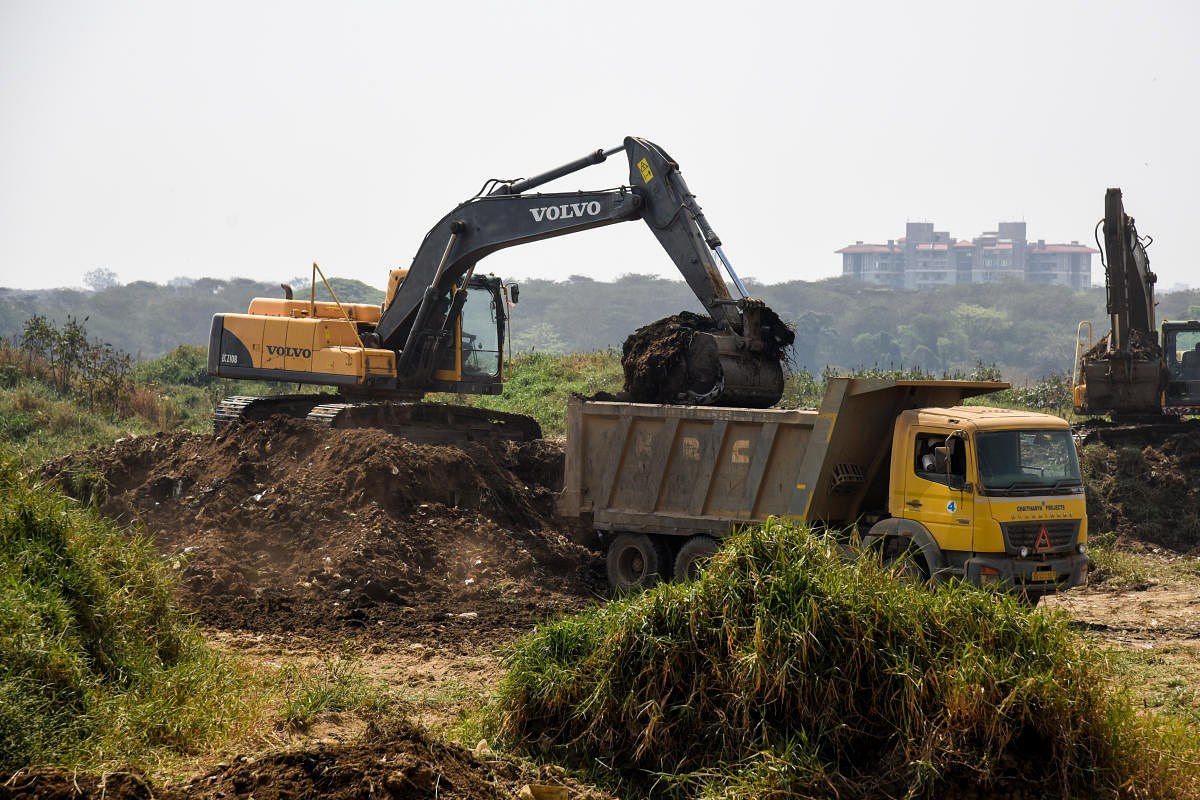
Days after assuming responsibility to monitor the restoration of Bellandur and Varthur lakes, Chief Secretary P Ravi Kumar inspected the polluted water bodies on Friday.
During the visit, engineers and contractors working on the project to restore the lakes placed many demands before the chief secretary, especially to approve land to deposit the silt removed from the water bodies.
The desilting work in the lakes may have begun in December, but workers are not given a place to dump the excavated silt. Authorities have many options, including dumping the silt at the quarries in Mallasandra and Vittasandra.
They are also considering dumping the silt in the defence land closer to the lakes to save time and transport costs.
Rakesh Singh, Additional Chief Secretary at the Urban Development Department, said a meeting had been held with the defence authorities to see if the option was viable. Since the Karnataka State Pollution Control Board (KSPCB) has cleared using the silt for agricultural purposes, authorities are also considering distributing the silt to farmers in the close by areas. One of the contractors said that until recently, they had not been given the precise map marking areas containing silt categorised as hazardous.
“We received the details recently and now the work can be speeded up,” he said.
The chief secretary asked government agencies like the KSPCB, the BWSSB and the BDA to follow the National Green Tribunal’s (NGT) orders.
The tribunal’s order has asked the Bangalore Water Supply and Sewerage Board (BWSSB) to ensure no sewage or effluent is discharged into the water bodies.
The KSPCB is expected to develop a robust water quality monitoring programme to check the drains networked to the lakes and also undertake water quality monitoring at least in five locations for each lake.
An engineer on the spot said 20 per cent of the desilting work at Bellandur was finished, while 40 per cent desilting had been done in Varthur in three months.
The process is expected to produce over 47 lakh cubic metres of silt.
It has been given 18 months’ time for completion and is expected to be completed in August 2022.